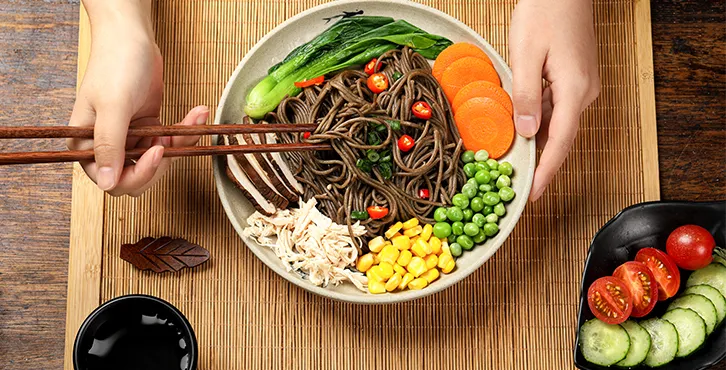pasta and bolognese sauce
The Art of Pasta and Bolognese Sauce
Pasta and Bolognese sauce, the quintessential Italian dish, embodies both simplicity and complexity in its preparation and flavor profile. It is a classic that has traveled the globe, bringing together individuals, families, and cultures around the table. In this article, we will explore the origins, key ingredients, preparation techniques, and variations of this delightful dish.
Origins of Bolognese Sauce
Bolognese sauce, known as ragù alla Bolognese in its native Italy, hails from the city of Bologna in the Emilia-Romagna region. Its roots can be traced back to the 18th century, where it was traditionally made with lean cuts of meat, vegetables, and herbs. Over time, the recipe evolved, and today, it is characterized by a rich and hearty mixture often including beef, pork, veal, or a combination thereof, along with diced carrots, celery, and onions.
The sauce is not merely a meat sauce but is an embodiment of slow-cooked flavors, allowing the ingredients to meld beautifully. It’s essential to cook the sauce low and slow to extract the best flavors. The use of wine, typically red, adds depth and richness, while a touch of milk or cream lends creaminess to the final dish.
Choosing the Right Pasta
While Bolognese sauce can be served with various types of pasta, it is traditionally paired with tagliatelle, a flat, ribbon-like pasta shaped to hold onto the sauce. Other suitable options include pappardelle, fettuccine, or even gnocchi. The texture and shape of the pasta play a crucial role in how well it absorbs the sauce, making the choice of pasta critical to the overall dining experience.
Preparing the Perfect Bolognese Sauce
To prepare a traditional Bolognese sauce, gather the following ingredients ground meat (beef or a mix of meats), olive oil, butter, onions, carrots, celery, garlic, canned tomatoes (or fresh, if in season), red wine, milk, salt, and pepper.
1. Sauté the Aromatics Start by finely chopping the onions, carrots, and celery, also known as the soffritto. Heat olive oil and butter in a large pot over medium heat and add the soffritto, cooking until softened and fragrant.
pasta and bolognese sauce

2. Brown the Meat Increase the heat and add the ground meat. Break it apart with a wooden spoon and cook until browned. This step is crucial, as it enhances the sauce's flavor.
3. Deglaze with Wine After browning the meat, pour in a generous splash of red wine. Scrape the bottom of the pot to release any caramelized bits. Allow the wine to reduce for several minutes.
4. Add Tomatoes and Simmer Incorporate the canned tomatoes, season with salt and pepper, and bring to a gentle simmer. Lower the heat and let the sauce simmer for at least one hour, stirring occasionally.
5. Finish with Milk Towards the end of the cooking time, stir in a splash of milk. This enriches the sauce and balances the acidity of the tomatoes.
6. Cook the Pasta In a separate pot, boil salted water and cook your chosen pasta until al dente. Reserve some pasta water before draining it to adjust the consistency of the sauce if needed.
7. Combine and Serve Toss the cooked pasta with the Bolognese sauce, adding a bit of reserved cooking water if necessary. Serve hot with a generous grating of Parmesan cheese and perhaps a sprinkle of fresh basil.
Variations and Personal Touches
While the traditional Bolognese sauce recipe is revered, many chefs and home cooks put their unique spin on it. Some might add pancetta for added depth, while others include a variety of herbs like thyme or bay leaves. Vegetarians can easily adapt the dish by substituting meat with lentils or mushrooms, creating a similarly hearty texture.
Comforting, satisfying, and rich in history, pasta with Bolognese sauce is more than just a meal—it’s a culinary journey that connects us to Italian heritage. Gather around the table with family and friends, savor the layers of flavors, and create memories with each delicious bite. Whether you’re enjoying it on a cold winter night or a summer evening al fresco, this dish remains a timeless classic that warms the heart and delights the palate.
-
Unleash Your Inner Chef with Delectable Italian Pasta CreationsNewsAug.01,2025
-
Savor Health and Flavor: Irresistible Soba Noodles for Sale Await!NewsAug.01,2025
-
Nourish Your Body with Premium Organic Ramen - A Culinary Delight AwaitsNewsAug.01,2025
-
Elevate Your Dishes with Our Exquisite Kinds of Egg NoodlesNewsAug.01,2025
-
Dive into Flavorful Convenience with Our Ramen OfferingsNewsAug.01,2025
-
Discover Exquisite Types of Naengmyeon and Chilled Soba NoodlesNewsAug.01,2025
-
Is Whole Wheat Pasta Healthy?NewsMay.30,2025
Browse qua the following product new the we

















































































































